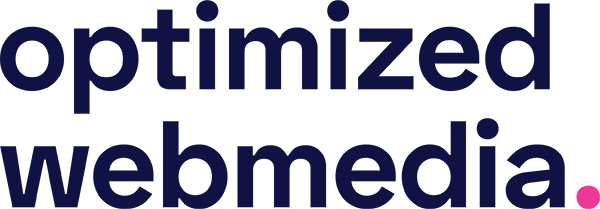
Jump ahead to:
Amazon FBA
Newsflash: Gone are the days of set-and-forget Amazon PPC campaigns.
Instead, to create long-term sustainable and successful campaigns, you simply must master the art of Amazon PPC optimization.
In this article, I’ll guide you through the four-step weekly optimization process I’ve been using and improving upon for the last five years across hundreds of thousands of dollars in ad spend.
This optimization checklist will help you cut costs, expand on winning campaigns, and grow the profitability of your business.
Let’s get started!
Why is Amazon PPC optimization important?
Amazon PPC optimization is vital in order to help reach key Amazon advertising objectives:
Amazon PPC optimization is not just about driving immediate sales—it’s a comprehensive strategy to increase visibility, gather data, build brand awareness, and ultimately drive long-term growth on the Amazon marketplace.
Considerations before optimizing PPC campaigns
Every business will have different needs and objectives when running Amazon PPC campaigns.
As such it’s impossible to give specific tailored advice for every scenario here in this article.
Instead, what this article will cover is an overarching guide to the core principles of a healthy Amazon PPC optimization schedule to start with and adapt to your individual business needs.
To navigate these nuances and implement the optimization process, there are a couple of things to take into consideration.
Consideration #1: Marketing Objectives
Not every business will have the same marketing objectives.
New Amazon sellers will usually be using Amazon PPC to launch and rank new products.
As such, their objective will be to take a more aggressive approach upfront in order to establish visibility in search results.
This will usually mean an initial higher advertising cost with the goal of this being offset by the organic sales that will come later on as a result.
Whereas an established brand that adds Amazon as an additional sales channel on top of an existing direct-to-consumer approach will be far more focused on profitability.
They will be less concerned with customer acquisition – as this is already taking place off-Amazon – and more concerned with collecting revenue on branded search terms whilst also driving profitable revenue.
Consideration #2: Product Lifecycle
In a similar vein, each product has a lifecycle, and understanding where the products you are advertising are within their lifecycle will help define your optimization criteria.
If you try and immediately optimize a newly launched product’s PPC campaigns to a 10% ACOS (Advertising Cost Of Sales) you will stifle its launch and limit the organic ranking potential.
On the flip side, if you let an established product run wild with a 50% ACOS, you may struggle to turn a profit on it.
So, when deciding on your optimization approach, take these factors into consideration and adapt the parameters if need be.
How to find Amazon PPC performance data
To optimize PPC campaigns, you first need to know how they are performing.
You can get a quick overview inside Campaign Manager, but to dig deep into the data and get accurate, actionable insights, you have two main options.
Search Term Report
Amazon’s Search Term Report is the treasure trove of information you need to make data-driven decisions when you optimize PPC campaigns.
It’s a report that details every impression, click, and conversion your ads have registered, and the search terms and ASINs that they relate to.
To download your report, head to Seller Central > Campaign Manager > Measurement & Reporting > Sponsored ads reports.
Click the ‘Create Report’ button and configure the report to your needs. The default setting of ’30 days history’ is fine.
Then after a few minutes of processing, you’ll be able to download an Excel file like the above which we’ll use to filter data in the optimization steps.
Amazon PPC Tools
If you’re not really a spreadsheet kind of person or want to speed up the process of optimization with some automation, there is a whole range of software tools that can help you.
I’ve used a lot in my time, and regularly update our guide to the best Amazon PPC tools in the market to help you choose the best one for your business.
In this guide, I’ll focus on the manual process using your Search Term Report as this is accessible to every seller, and will also teach you the foundational principles of optimization.
A 4-step weekly PPC optimization checklist
Keeping a regular schedule to optimize Amazon PPC campaigns is vital for your overall Amazon advertising performance.
There are a lot of levers you can pull and niche tactics you can deploy to improve your efficiency and profitability, but at the core of good optimization are four key pillars:
- Improving relevance
- Improving conversions
- Improving profitability
- Driving expansion
Let’s take a look at each one in turn to understand what criteria we’re looking for and the resulting optimization actions we should be taking when the criteria are met.
Step 1: Optimizing PPC campaigns for relevance
The first step in your Amazon PPC optimization checklist is to eliminate search terms and ASINs that are irrelevant to your product.
You can start with a very manual approach of going through the entire list of search terms in your report and finding terms that are clearly irrelevant.
For instance, if I’m selling a yoga mat and I see the search term ‘bluetooth headphones’ has had even one click, I’ll be sure to add that term as a negative keyword.
You shouldn’t get too many of these, but sometimes the Amazon algorithm works in mysterious ways and it’s good to periodically check for 100% junk search terms.
Then, a more data-driven approach is to filter for search terms and ASINs that have a low click-through rate (CTR).
Click-through rate can be improved in a number of ways, but when you notice some targets getting lower CTRs than others it’s time to weed the poor performers out.
To find them, filter your spreadsheet’s click-through rate column to less than 0.2%.
Step 2: Optimizing PPC campaigns for conversion
The next step is all about pinpointing targets that are successful in attracting clicks, but not translating those clicks into actual sales.
These targets, which could be specific search terms or ASINs, are costing money for each click but not providing a return on your investment.
For this step, we’re going to filter for targets that have hit our ‘click threshold‘ but made zero sales.
The click threshold you set will depend on the product’s conversion rate, lifecycle, and how aggressive your approach is.
For example, if your product has a historic conversion rate of 10%, then you would expect to see an average of one sale for every ten clicks.
Then, if you’re optimizing a mature product with a strict goal of profitability you would set a low multiplier to that number (eg. 1x – 10 clicks with no sales), whereas if it’s a new product you’re launching you would look to set a higher multiple (eg 2-3x – 20-30 clicks with no sales).
A lower multiple will keep costs down but may eliminate potentially relevant keywords before they have the chance to be fully tested.
Whereas a higher multiple allows targets more chance to come good but can result in higher ad costs in the short term.
And remember, you can adjust and update these thresholds at any time if you want to either tighten up on profitability or relax the guard rails to drive more visibility.
Step 3: Optimizing PPC campaigns for profitability
Once you’ve weeded out the poor-performing search terms and ASINs from your ad campaigns, it’s time to turn your attention to profitability.
In this step of the process, we’ll look to optimize toward a target ACOS (advertising cost of sales) by managing bid levels.
The ACOS you are targeting will again depend on a few variables:
Use these factors to decide on a target ACOS for each product and campaign.
If you’re not sure what your target ACOS should be, a good place to start with an established product is using your profit margin and setting your target at a break-even ACOS.
For example, if your profit margin is 30%, set your target ACOS at 30% too.
Then, open up your search term report and filter for any search terms or ASINs over your target ACOS.
Step 4: Optimizing PPC campaigns for expansion
So, we’ve removed poor-performing targets and optimized for improved profitability.
This final step in our 4-step process checks your Amazon ads for high-performing keywords and ASINs that are generating sales below your target ACOS.
This means there is room to increase bids giving an opportunity to drive more impressions, clicks, and sales.
As Amazon PPC is such an effective tool for driving organic rank and thus market share, this is a particularly powerful step in the keyword optimization process.
The process is almost identical to step three, except this time we’re filtering for keywords and ASINs below our target ACOS.
Once you’ve identified these targets, follow the same process as step three, but instead of decreasing, increase the bids by 10%.
Don’t worry about pushing costs too high and ruining your ad campaign performance.
If the ACOS for one of these keywords or ASINs creeps up above your target, they will appear in the filters for step three in a future optimization process allowing you to nudge bids back down again and keep it in a sweet spot of performance.
Taking Things Further
While this Amazon PPC optimization checklist may feel a little overwhelming for new Amazon sellers, it really is just a starting point.
In time, there are many more optimization levers you can pull, such as:
However, what we’ve covered in this guide will provide solid foundations for those new to Amazon PPC ads and give a good base to work from.
Wrapping Up: Amazon PPC Optimization
Using Amazon advertising to grow your sales is not a one-off operation.
If you’re serious about success on the platform then you must set aside time to regularly optimize Amazon PPC campaigns in the four key areas we’ve discussed:
- Improving conversions so you’re running ads against search terms and ASINs that will actually turn into sales
- Improving relevance so your ads aren’t getting lost in search results
- Improving profitability so you get a consistently increasing return on ad spend
- Driving expansion for long-term, profitable growth
Contact Us for our Amazon Marketing & Digital Marketing Services
Contact our team at Optimized Webmedia to learn more about our Amazon Marketing & Digital Marketing services.




